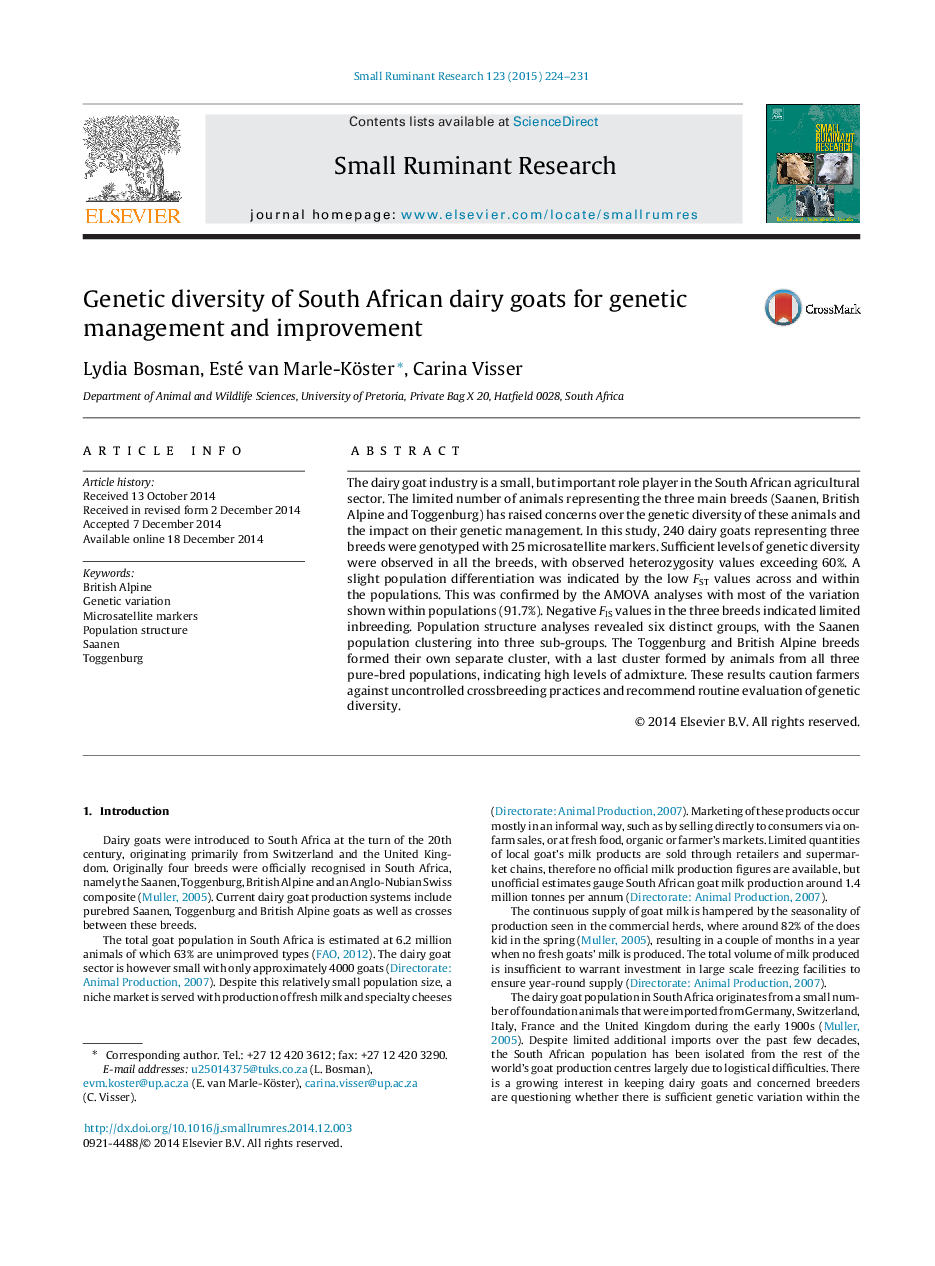| Article ID | Journal | Published Year | Pages | File Type |
|---|---|---|---|---|
| 5795488 | Small Ruminant Research | 2015 | 8 Pages |
â¢240 dairy goats from three breeds were genotyped using 25 microsatellite markers.â¢Moderate to high levels of genetic diversity was observed in all breeds.â¢Limited inbreeding was indicated by FIS values.â¢Populations clustered into three breeds and a crossbred population cluster.â¢Uncontrolled cross breeding should be avoided to maintain breed integrity.
The dairy goat industry is a small, but important role player in the South African agricultural sector. The limited number of animals representing the three main breeds (Saanen, British Alpine and Toggenburg) has raised concerns over the genetic diversity of these animals and the impact on their genetic management. In this study, 240 dairy goats representing three breeds were genotyped with 25 microsatellite markers. Sufficient levels of genetic diversity were observed in all the breeds, with observed heterozygosity values exceeding 60%. A slight population differentiation was indicated by the low FST values across and within the populations. This was confirmed by the AMOVA analyses with most of the variation shown within populations (91.7%). Negative FIS values in the three breeds indicated limited inbreeding. Population structure analyses revealed six distinct groups, with the Saanen population clustering into three sub-groups. The Toggenburg and British Alpine breeds formed their own separate cluster, with a last cluster formed by animals from all three pure-bred populations, indicating high levels of admixture. These results caution farmers against uncontrolled crossbreeding practices and recommend routine evaluation of genetic diversity.
